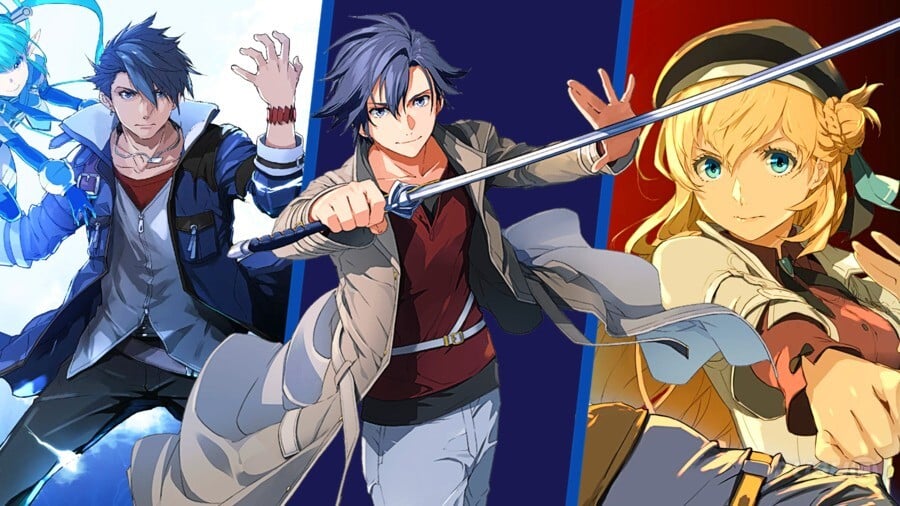
With the release of Trails through Daybreak earlier this year, Ys X: Nordics fast approaching, and Trails through Daybreak 2 arriving in February, we once again got to catch up with Falcom president Toshihiro Kondo at a recent UK press event.
We asked Kondo-san all sorts of questions about the Trails series in particular, resulting in our biggest ever interview with the veteran developer.
Push Square: To start with, can you tell us about what Falcom's been up to since our last interview?
Toshihiro Kondo, Falcom President: So, last year was the Ys X year, so we were working on that, and then this year was mainly — since we've finished working on Trails through Daybreak 2 — we just finished what's called Kai no Kiseki [in Japan]. And that only just released in Japan a few weeks ago, so now we're handling the 'aftercare' for Kai.
What about Falcom's workforce? Have there been any changes to how the company operates?
It hasn't really changed in the last two to three years, but about five years ago we did see an increase in development staff.

Can you tell us about the structure of Trails through Daybreak 2, and how it follows on from the first Trails through Daybreak?
So to talk about the characters first, obviously a lot of the characters are returning from Daybreak 1. And in Daybreak 1, we got to see them when they were still kind of inexperienced — and we got to see their growth throughout that game.
Going into Daybreak 2, even though the party starts out in different places kind of doing their own things — as you progress through the game they obviously rejoin — we get to see them as they reach a point of having all that character development, and personal development, and growth through the first game. All of that's reflected in Daybreak 2.
And to talk about the system briefly, you still have the seamless battles that transition between the action combat and the turn-based combat, and a lot of those elements that were in the first game, those have been iterated upon a little. There are new elements to both field combat and the turn-based combat as well.
And for storytelling it's a little bit different this time. The first game focused on Van, and Van as he gathered his workers — Arkride Solutions — around him. However, for this game, at times the player will be able to select different routes, and the routes feature different parties of different characters. Sometimes not even including Van.
So the player will have the option of choosing between these groups throughout the course of the game, and the story proceeds in this way. Eventually the player will play through all of the routes, but sometimes each route focuses on completely different characters — that's something new.
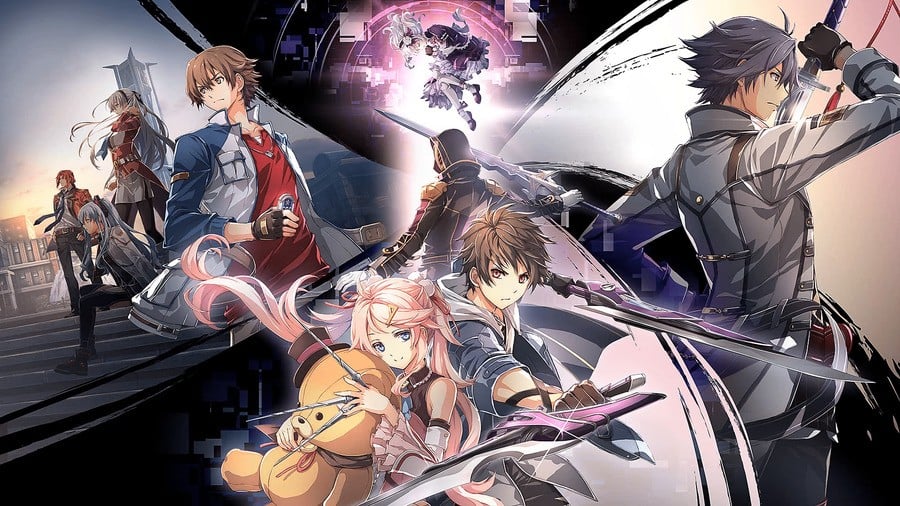
That structure reminds us of Trails into Reverie, which also featured a story that was split between different groups. Is Daybreak 2 an evolution of that system?
Yeah, Reverie was certainly in our minds. However, our character designer uncharacteristically came up with an idea — this designer wanted to have a rival character to Van's Grendel. And so presenting this, the team thought "oh that's actually a pretty good idea", and so we took it on.
And that's actually what led to the idea of the story having multiple routes, more than Reverie's influence.
For the Grendel specifically, it actually had some inspiration from the Spider-Man Venom movie, so there's almost like a superhero aspect to it. The Grendel itself, you could say it has a kind of superhero look to it, and so we thought it'd be cool to have this contrasting Grendel as well.
So will there be more Grendel battles in Daybreak 2, since Van has a rival now?
Yes, at this point in the story, Van has finally learned how to use and become comfortable with using Grendel. So at a certain point in the story, the game opens up and as the player, you can essentially use the Grendel form freely.
With the Grendel getting more use, how has the overall combat system evolved in Daybreak 2?
Basically a lot improvements have been made to the seamless system, in terms of the action combat and the turn-based combat. One of these is the EX Chain system, whereby you're able to essentially stun an enemy and then when you begin the turn-based battle, the enemy will remain in a stun situation, and it'll take some damage.
There's also something new called Cross Charge, which is during the action-based field battles, if you're able to dodge an attack at the last second, you can press a button and one of your characters will jump in and get an extra attack in on the enemy.
This is from the designer constantly wanting to improve the tempo of battle, to make combat feel more smooth, and to have a better rhythm to it. By adding these two elements, it definitely improves the speed and tempo of battle.
The basis for these ideas is basically the Link Attacks from the Cold Steel series.
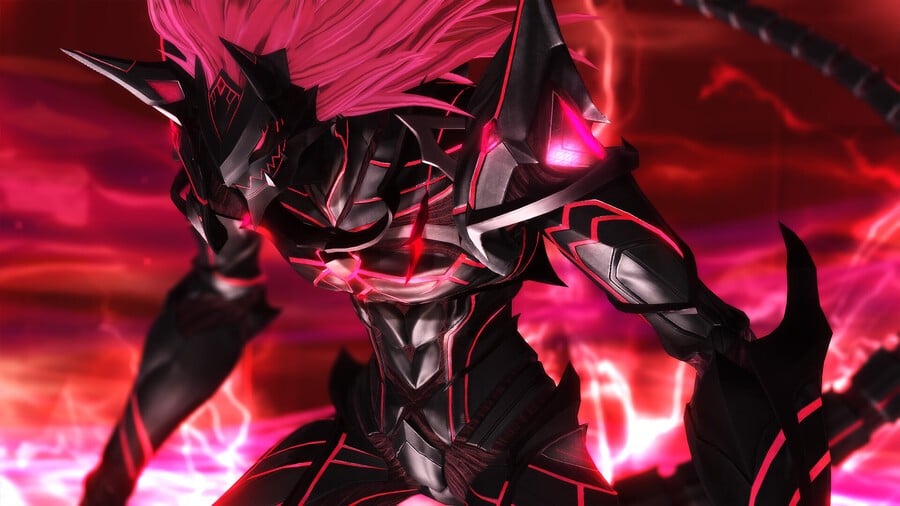
So sticking with the topic of action combat, a lot of RPGs — some of which were purely turn-based RPGs — are starting to adopt an action combat approach. Like Metaphor: ReFantazio, for example, which has a very similar system to Daybreak.
What do you think is the thought process behind this trend?
I was actually speaking to Hashino-san — Metaphor's director — about this. One thing I feel is that players in Japan generally really like the turn-based system, and are completely happy with it.
On the other hand, a lot of the feedback that we get from players in different parts of the world is that they'd very much like there to be action. We very carefully check all of the feedback we get from around the world, and I noticed that particular feedback with pretty surprising frequency!
And so therefore, I said, is there any way that we can satisfy both types of fans? When you start down one direction it's hard to turn to another, and it's also difficult to fully please all of these people.
Generally speaking, the idea for having the current combat system came from just seeing if there was a happy medium we could strike between a fully action system, and a turn-based system. At least for us at Falcom, this is our attempt at trying to cover both bases.
And what are your thoughts on other developers making use of similar systems?
I can't really speak for other developers, obviously, but I wouldn't be surprised if a lot of it comes from the same reasons as us here at Falcom.
One interesting thing to note, however, about action battle systems versus command, is that when you have a turn-based battle system, it's actually easier to... progress, in that it feels like there's more progression.
In terms of having character progression, turn-based systems generally lend themselves better to that feeling. Particularly when you have a larger party. When you have more people in the party, it's much easier to show their growth through a system like this, versus an action system.
And the reason that a developer might choose one over the other often relates to these things, but again, I obviously can't speak for anyone but ourselves.
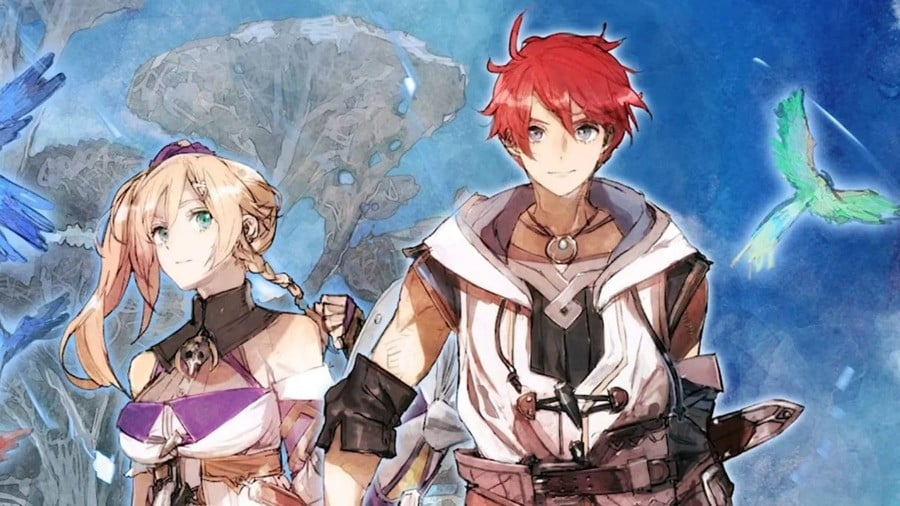
Was there ever a point where Falcom genuinely considered going full action combat with the Trails series? Or is turn-based combat the identity of those games, while other Falcom titles like Ys and Tokyo Xanadu focus on action?
Yeah, we definitely want to keep — particularly now — the lineation between our games. As you mentioned, Ys is very much an action-first series, which is known for its fun ease of play. Whereas the Trails series, it's much more methodical.
Again, going back to the fact that there are so many characters in the Trails games, showing their growth is much easier to do when you have a command-based system.
Also, players may like one or two characters in particular, and they want to focus their energy on making those characters stronger. And again, because the command system lends itself better to that, that's what we've always decided to go with.
On the flip side, if we were to try and do this with Ys, it would probably be impossible! Because the thing about having a really detailed character development system is that with an action game, the characters will need to have some kind of differentiation, so that they all play differently.
It would require so much data and time to be able to create characters like that. It's really hard to mix these two elements. For the time being at least, Trails will stay Trails, combat-wise, and Ys will stay Ys.
Moving on from the battle systems, then, have the character progression systems in Daybreak 2 changed at all?
This time, the big changes essentially are that there are more Arts Drivers, which will allow you to have access to different Arts combinations. So that's been carried over and expanded upon from Daybreak 1.
And then there are things called Dual Arts, which are similar to the Lost Arts in the Cold Steel series, which are a combination of two different Arts together. But other than that, it is very much a continuation of what came in Daybreak 1.
In terms of the Quartz system, the designer for this one in particular was a really big fan of the Trails in the Sky trilogy's Quartz system. This designer paid careful attention to that and respected the past of the series, so that's why there's a lot more customisability for the Orbment and Quartz system within both Daybreak 1 and Daybreak 2, compared to the games that came before.
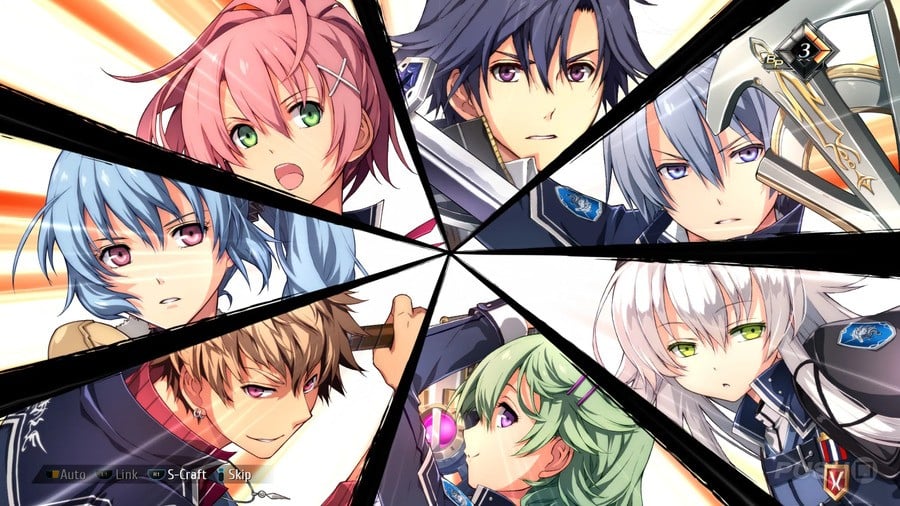
One thing we've always wanted to ask... In the Cold Steel games, it's easy to build 'broken' characters, but it's harder to 'break' the combat system in Daybreak. Is that something Falcom was aware of when designing and balancing Daybreak?
[Laughs] We didn't necessarily think to go against what was done in the Cold Steel games, as a reaction to being able to create really busted characters. The thing about Cold Steel is that because you had Class VII, and a continuation of that throughout the course of the series — and they were with you for most of your time playing those games — there's this real deep level of customisation available to the player, and that essentially allowed the player to, like you said, create really busted builds that you could use to steamroll things in the game.
On the flipside with Daybreak, the way the game is actually structured, there's a lot of coming and going with your party members. And to open that up to as deep a level of customisation as you might have had with Cold Steel, it probably would have made the boss battles overly difficult.
When designing around how Daybreak is structured, it was probably natural that the balance came across differently versus the Cold Steel, which had a very different structure. That's maybe where your feeling of a different balance, in terms of character building, is coming from.
So moving on from combat, minigames in were largely missing from Daybreak 1 — but we've read that they're much more common in the sequel. Can you tell us about minigames and optional activities in Daybreak 2?
The thing about fishing is that it's been in every other game in the series... and it was something that we genuinely wanted to do [in Daybreak 1]. We had actually been working on thinking about how to implement it, but we couldn't.
And the reason for that is because with Daybreak 1, we made a brand new system for everything. Rather than focus on something like a minigame, it was important that — essentially what you've just said — we wanted to focus on the gameplay itself and the systems.
But because for Daybreak 2 the systems had already been created in Daybreak 1, all we needed to do was refine upon it and build upon what was there, which gave us more latitude to implement these things that we wanted to do.
So, you've got the return of fishing obviously, so people will once again be able to enjoy that. There's also a hacking minigame that adds this element of solving a maze, and then you do some button inputs to open treasure boxes. And in addition to these there are actually more minigames as well. It's definitely a game where the revival of minigames is in full force.
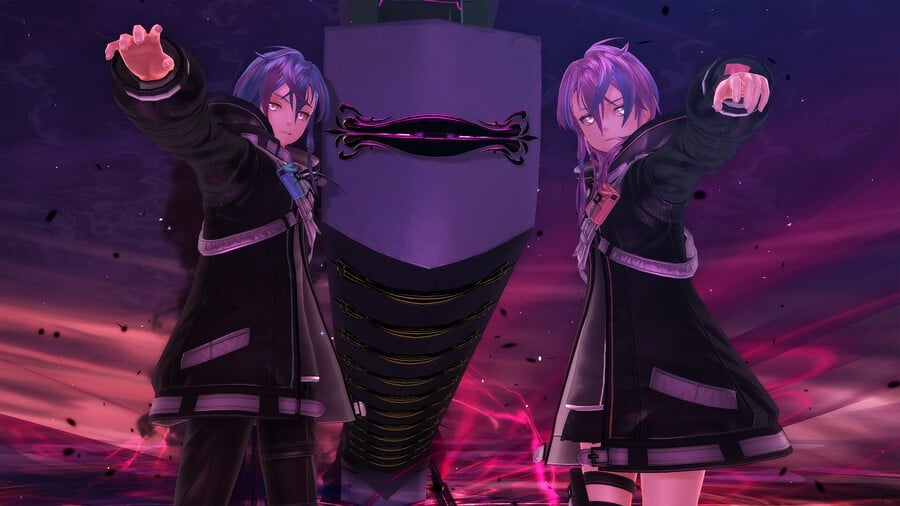
So that's kind of reminiscent of Trails into Reverie again, in the sense that there's just more to do outside of the main story.
And we've read that, just like Reverie, Daybreak 2 has a replayable dungeon where you can level up characters and claim loot. Can you tell us more about this aspect of the game?
Yeah, there is definitely some influence from Reverie there, but this new dungeon, the Marchen Garten, is like a virtual space that allows you as the player to build a party of characters that might not necessarily come together in the main game.
This is deliberate because throughout the course of the game, there might be characters who have very limited appearances within the story itself. They pop in, they have their role, maybe you play as them briefly, and then they go — or there are characters who you're never able to use in concert with other characters you might like.
And obviously for RPG fans, creating these dream parties is something everyone loves. So this is kind of an opportunity to address that desire that most players have, to be able to spend time to build the characters that you like, and then to build the party you like.
So while obviously taking inspiration from Reverie, the bigger inspiration is just how to solve the problem of having characters that people like, and allowing the player to actually use them, in a situation that still makes sense within the game.
Just quickly jumping back to minigames... will snowboarding ever return in the Trails games?
[Laughs] Well as long as there's a place that has snow, we might be able to do that!
So, broadly speaking with regards to the Trails series, you had previously said that the overall story is maybe 70 or 80% complete with Daybreak 1 — and now with Kai no Kiseki launching in Japan, we're just wondering how complete the story is at this point?
So the thing about the Calvard... arc, if you want to call it that, this is the place where the arc itself is becoming the climax of the entire series. We've already seen a lot in these first two Calvard games that have kind of pushed things to a higher level of understanding with what's going on in the world of Zemuria.
Specifically with Kai, there's one event in particular — which obviously I can't say for spoiler reasons since the game hasn't been announced for the West yet — that really brings to light a lot of the mysteries of the world.
So once this Calvard arc — however long it ends up being — is complete, the series itself, overall, will be about 90% complete.

So with that in mind, do you and Falcom as a whole have a vision for how the Trails series ends?
[Laughs] So now we're at the point where the development staff are working on writing up the end of the Calvard arc. And as the president, I've spoken to certain members of the team, and I've said to them "you also need to give me how this whole thing ends" [laughs]. So that's kind of the current instruction that I have for the team.
I don't know necessarily if that's quite how it all ends, but it's very important for me and the developers themselves to come up with an ending, and share that with the team so that they have something to work towards, even if we end up changing it a little bit.
The truth is that some of these folks have been working on the series for a very long time now, and they're kind of ready to move on to new things. In addition to that, you also have new people who are joining the company, and they have to get caught up with these things too.
It's really important for us as a company to think about how it's going to end, and to share that with the members of the team, and begin to work towards that definitive end of the series.
Is ending such a long-running series a daunting prospect?
The first thing I felt was... boy it's difficult to end a series! We got so good at thinking about how to continue the series that we never kind of had a chance to stop and think about "okay, how are we supposed to end this thing?"
I specifically told the team, "okay guys, we really need to come up with an ending!"
I want to come up with an ending that will satisfy us, as the developers, and also, it's obviously incredibly important to come up with an ending that's going to satisfy the players as well. Particularly those players who stayed with the series for 20 years, and have waited a long time to see how the series is going to end.
I want to make sure that it ends in a way that makes people say "oh man, I'm glad I stayed until the end, I'm glad I played through all of these games to reach a point where I was able to complete this" — to have a sense of accomplishment and happiness.
Yeah, so to reiterate, we got really good at continuing the series, and now we just need to figure out how to end it — which is harder than I anticipated!
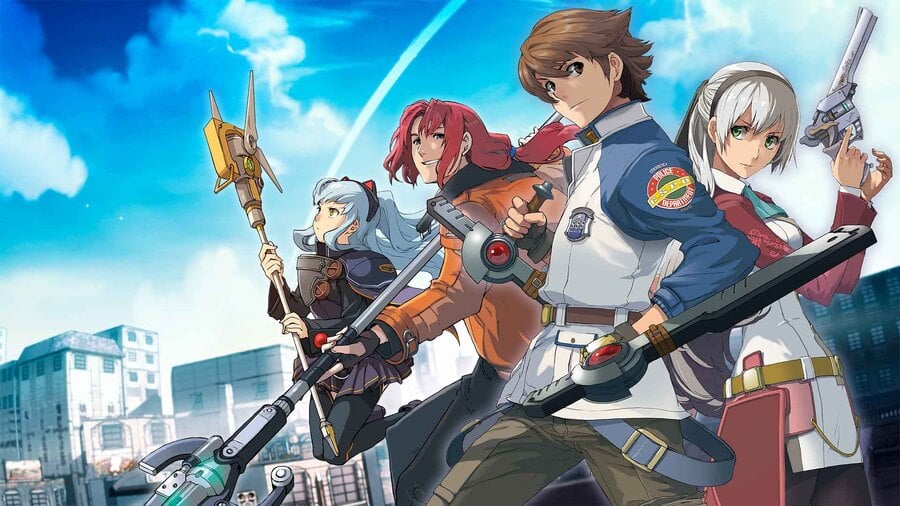
And so with the end now in sight, is there anything that you and the team look back on and think... it's crazy that the Trails series has come this far? Did you ever envision that the series would last this long and evolve so much?
No at the beginning, even though we had the idea — while making Trails in the Sky — that we wanted to do an Erebonian (Cold Steel) arc, and that we wanted to do a Calvardian (Daybreak) arc, we were actually told by older people in the company not to think about creating a series that hasn't even proven itself sales-wise [laughs].
And that was a good point — why were we doing it? But we were so focused on being able to continue doing the series that it was like "oh, it's been ten years!". And after that, before we knew it, it's been 20 years... so no, we never envisioned that it would be going on as long as it has.
Trails has come so far in terms of global popularity as well. The series has never been more accessible or as popular, especially here in the West. Is that newfound success important to you and Falcom?
Yeah, for sure. I mean, from a pure sales perspective, you've reached a point where the combined regions of Asia, and the West as a region, the sales are greater than Japan — about 60% of the overall sales. So, you know, the West has become a market that can't really be ignored!
For example, nowadays, whenever we release news — even if it's Japanese news — a lot of times, the very first people to comment on a Tweet or a video are foreign players who aren't Japanese.
It's really important for us as a company to keep those players in mind, particularly because, obviously you have the sales aspect of it, but also the fact that 20 years ago — especially in the West — JRPGs weren't as mainstream as they are now. Or at the very least, they weren't as widely played. So over the years, we've seen more and more Western players become interested in the Trails series, and begin to give feedback.
And that's something that's really special, something that we really want to keep in mind going forward.
So, absolutely, the foreign users are very important to the company as a whole, and they are people that we keep in mind as we create the games.
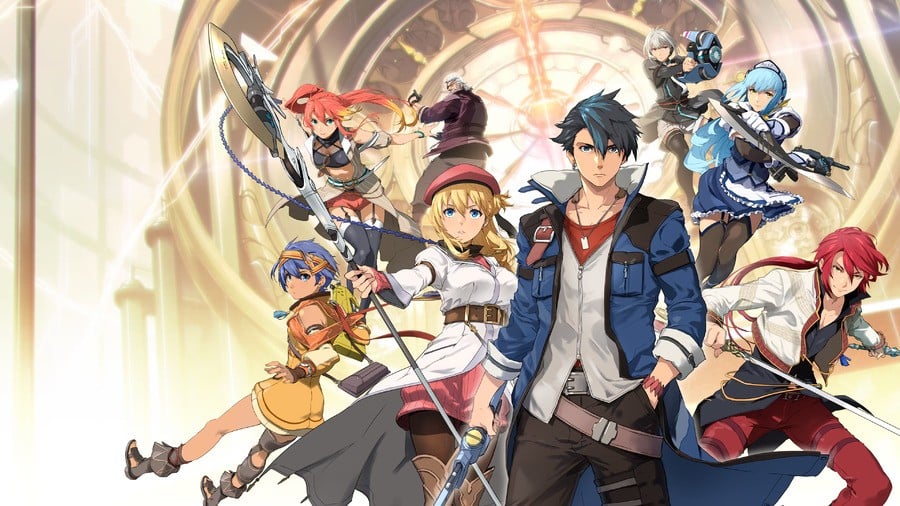
On the topic of releasing Falcom titles in the West, we can't help but notice that Daybreak 2 has been localised very quickly — it's coming in early 2025, and we've already had Daybreak 1 and Ys X this year.
On the localisation and publishing side of things, what's actually changed to speed up the whole process?
Alan Costa, NIS America Associate Producer: That's an absolutely fantastic question. So not to toot our own horn too much, but if you look back at the calendar right now, as you mentioned, we just released Daybreak 1, right? In a couple of weeks [at the time of this interview] we're releasing Ys X — and then early next year, it's Daybreak 2.
So this is the most Falcom we've ever given the world [laughs] — or the West, I should say — at once. And this is in addition to localising our other games; we just had Reynatis come out a few weeks ago.
So to answer your question, yeah, over the years, we've honestly been racking our brains to figure out the best way to get these games out in a timely manner. We've had various hurdles and obstacles, and in the case of the Trails series in particular, the biggest issue is the amount of text — there's just so much text in these games.
What we've done is essentially figured out systems for how we can attack and approach the games from a localisation standpoint, to be able to efficiently and accurately localise them. Because for us, the most important thing is to maintain a high level of quality while bringing the games out quicky.
Because I don't think it necessarily serves anybody — neither Falcom or especially the players — if we run the game through, you know, ChatGPT or something and then throw it out there. Who needs that? That doesn't do justice to the games, and at the end of the day, even if a game does come out faster, no one's happy about it because you lose all the glory and the beauty of what's in the original.
So, we've found a way where we've really been able to cut this [localisation time] down. The goal right now is, essentially, we want no more than a year between the Japanese release and our release for the Trails games. And if we can continue to get that down even more, we will.
And then for the Ys series too — if you look at the Japanese release for Ys X and then Western release, it's about a year. But the goal someday is we'd like to get that down as small as possible — and if we could do six months, that'd be great.
So yeah, we've definitely figured out, internally, some systems for how we can get cracking on these games as soon as possible, maintain quality, and bring them out as quickly as we can in the West.
Does that mean we can expect Kai to be released in the West a few months after Daybreak 2? Maybe a few weeks? A few days...?
Alan Costa: No comment. No comment! [laughs]
Toshihiro Kondo: [Laughs]

So, just going back to the Falcom's success in the West, how has it been for you, Kondo-san, and Falcom, seeing Trails, Ys, and even Tokyo Xanadu — with the recent announcement — experience such growth outside of Japan and Asia?
Toshihiro Kondo: One thing that really surprised me was with the Western playerbase — we started to get this feedback from them. I originally thought that with the cultures of Japan and the West being so different — and within that there are obviously many areas of culture — I expected players to like and focus on different things.
But in many cases, even if they liked a character or a system for a different reason, Western players, generally speaking, like the same things as the Japanese playerbase. Whether that be very story-focused games, interesting characters, fun systems — the feedback really overlaps with what we get from Japanese players.
That surprises me, but at the same time, it's really encouraging — like we're headed in the right direction.
On the flipside, to give a more recent example, Daybreak is kind of more... "adult" in that the themes and the stories are a little more mature. And some of those elements that weren't as well received in Japan — the West actually likes them quite a lot. I found that very interesting and a bit surprising.
Can you tell us a little more about what kind of feedback you get from Western players, compared to Japanese players?
Well, specifically, we'll talk about the characters. As a general rule, Japan likes younger characters, meaning characters that show more growth throughout the course of the story — and it's often easier to depict that. I feel like Japanese players overall really enjoy seeing that journey — seeing people growing and changing.
Whereas, within Daybreak, Van is an adult. And even though Van is still a young adult, the way he's treated by characters around him is that he's almost like an old man! He's really well respected, relied upon greatly by the people around him. And that's one area I feel like Western fans are more appreciative than the Japanese fans.
And another example with characters too is that the Western fanbase seems to prefer Elaine (a woman Van's age) over Agnes (a younger woman) — these kinds of differences are a little surprising to me.

Sticking with that, obviously there's no romance system in Daybreak — and we've seen some fans express disappointment in that since the Cold Steel games allowed you to choose a romantic partner.
Is there scope in the later Daybreak games for Van to maybe romance specific characters?
[Laughs] So the thing about Cold Steel is that... the goal for that series was to depict this young man's — Rean's — school experiences. And with school experiences there are all of these things you can do as a young person, and part of that is obviously romance!
We really wanted to depict this aspect and give players a lot of choice in experiencing school as this character.
But then with the Daybreak games, it's the climax of the overall series. So when we weighed up whether to give players a little more freedom, like interactions with other characters, against portraying the climax and focusing on the story, in this case, the story won.
It was important for us, for Daybreak in particular, to push those things along, rather than focusing on content that allowed for a romance system. So in the Daybreak games, that's why you have more focus on telling a story.
So, Kondo-san, the last time we interviewed you, we asked you a series of slightly stupid questions to round things off. We've got a few less serious questions to ask you this time around as well.
First off, has Falcom ever considered making a Trails fighting game, preferably with an absolutely huge character roster?
[Laughs] Actually there is a game that's kind of like this that exists, called Ys vs. Sora no Kiseki, which is a fighting game with an action system.
If I'm ever allowed and we had the resources [laughs], we'd love to be able to make something like that again.
And which Trails character would you most like to play as in such a fighting game?
[Laughs] So in Kai no Kiseki, Rean's motions and attacks are really cool and fun, so if we were to make a fighting game, I'd want to play as this kind of iteration of Rean!
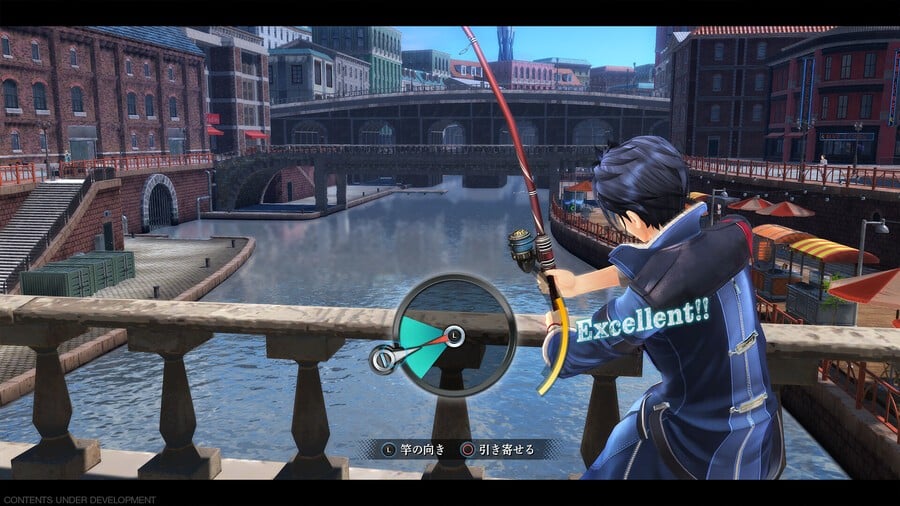
Sticking with Trails spin-offs, has Falcom ever thought about making a Trails minigame compilation title? A party game, almost, maybe Mario Party-style?
[Laughs] It's something we've never thought of! That's... actually a good idea. It'd be really cool to have one where you can play all the minigames from the past.
Especially for fishing! You could have all the famous fishing characters and have a fishing competition for them. Because obviously all of the main characters love fishing!
Can we expect the final Trails game — whenever that comes out — to feature approximately 200 playable characters?
[Laughs] Getting everybody in there might be a little difficult! But right now we're trying to figure out what we want the final location to be within the story. I do want to be able to have as many characters in there as possible, particularly because it's like we're the parents of these characters — that feeling of wanting to give your kids the spotlight.
At this moment, though, it's impossible to say how many characters there'll be and who will be featured in the end.
So, earlier, you mentioned how cool Rean looks in Kai no Kiseki. Is there ever a worry that bringing back beloved characters is going to overshadow everyone else?
Yeah, so that's definitely, probably there [laughs]. The truth is, when I was playtesting Kai, and Rean comes out... it's like, yeah, this guy's just got that main character energy. It's palpable!
Obviously he was the main character for four games, plus one third of another game, and for people who have played those games, they're going to have a deeper attachment and affection to Rean than others. So they're going to feel that even more strongly.
As developers, we feel that we must make main characters that are more appealing — ones that go above and beyond what's come before. That's what's on our plate!
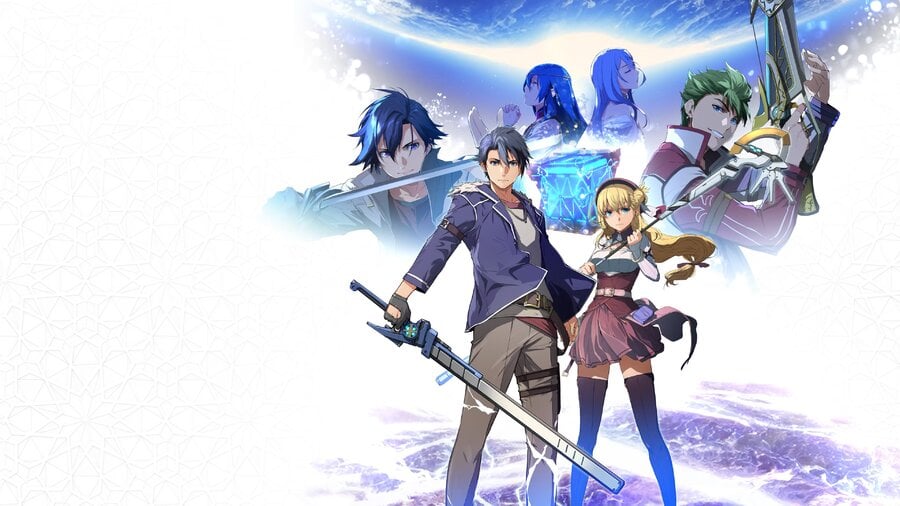
Has Falcom ever considered releasing a compilation of all the Trails games in one massive box?
[Laughs] Personally I haven't thought about it, but maybe the person in charge of sales has thought about it [laughs]!
And finally, is there anything that you'd like to say to our PlayStation-centric readers, and to Western Falcom fans in general?
For PlayStation fans, obviously PlayStation is a console that's been really important to the company, and obviously we'll continue to release games on the PlayStation — so I hope all the PlayStation fans out there look forward to what we have in store for everyone.
To talk about the Trails series, here we are into Daybreak 2, and this Calvard arc is becoming the overall climax of the story, and this game will eventually lead into Kai and the future of the series. I really hope that fans look forward to what's in store for them, here in the remainder of the Calvard arc, and beyond as well.
And then there's the Ys series, which doesn't have the same level of interconnectedness as the Trails games. Essentially, each game is individual, and players can pretty much pick it up wherever they like and play it. I hope folks are looking forward to Ys X and what comes afterwards, and if you've never given Ys a chance, I'd love for people to give it a try.
And finally beyond the franchises of Trails and Ys, there are also new games coming out — we've obviously already announced the next Tokyo Xanadu, and even beyond that, there are titles that we haven't talked about yet that we have in the works. I hope everyone looks forward to everything Falcom has coming out in the future!
Kondo-san and Alan, it's been a pleasure to talk with you, and we hope you enjoy the rest of your visit to the UK!
Both: Thank you!
Massive thanks to Kondo-san for taking the time to talk with us and answer our questions (again!). Huge thanks to Alan Costa for his answers and amazing translation efforts. Special thanks to Lottie Diao and the team at Reef Entertainment for making this interview possible.
Are you a big Falcom fan? Are you looking forward to seeing where the Trails series goes from here? Question what's beyond Daybreak in the comments section below.





Comments 25
Going to read this tomorrow on my work break. Falcom is rad.
Enjoyed that, I'm going to try and get more into the series next year. I've completed Trails of Cold Steel 1 and 2, and I'm now currently on chapter 5 of Daybreak and I've liked what I've played so far. So next year I will get Daybreak 2 and then move onto Cost Steel 3 and 4.
Also hyped for the Trails in the Sky Remake, be nice to see how this series began.
On the fighting game question: Genuinely, they just take the party select screen for the final boss of Cold Steel IV and make that a fighting game, it already basically looks like a fighting game character select screen.
Missed opportunity to ask about the Sky remake and if it’s coming to PlayStation…
That was a fun read! I especially found the bit about Western and Eastern preferences in protagonist interesting as I do think Van is definitely my favorite protagonist since Estelle from the Sky arc.
Looking forward to Daybreak 2 and Sky 1 remake!
Nice read. As for the fighting game question, it would be cool if it was something close to a 3D fighter (not arena), though I imagine they would just go with the same or similair style as the Ys vs. Sora no Kisek game.
Amazing interview and i love how much detail you were able to go into.
Love the Trails / Falcom games but i simply can't keep up anymore sadly - particularly given the length these games are.
Its great that the release times are getting closer and closer together with the Japanese release dates but I honestly have no idea how to get through them all
Maybe when the series is fully complete 😅
Awesome interview. I’m glad that PushSquare was able to do the interview, because it’s really clear that you guys are big fans of Falcom’s games, and you were able to go into deeper depth with the questions you asked. They weren’t just basic, skim-the-surface questions that anyone could have asked. Impressive!
That said, I wish you guys had asked a question about the upcoming Tokyo Xanadu game. Really enjoyed TX ex+ on PS4, and want to know more about the sequel.
Also, the dude is right to want to play as Rean Schwarzer in a fighting game. Who wouldn’t?! He rocks!
I just ended up playing Trails of cold steel on a whim, as I remembered seeing trailers from the ps3 but at the time I had fallen off the JRPG train. But now its one of my favourite series. Love Falcom
I'm not surprised about the west liking the adult themes more than Japan cuz even in Japan when u do have mature themes ur point of view is from children and with daybreak ur an actual full fledged adult and the west likes that cuz one of the major problems with the west has with Japanese media is that it's majority portrayed from children's perspective which gets really annoying after awhile
Thanks this is one of the best articles I have read here.
That said this may be a semi unpopular opinion but I feel sort of tired with the Trails series. It seems that the central story is going nowhere with the villains (?) only doing some sort of experiments. Also, a specific city is occupied by bizarre forces each year and most villains have been redeemed in recycling storylines.
@TripleKing333 I feel like they had questions that were restricted not to ask like is the next continent after calvard x continent or do you plan to remake other games or why do you price the premium edition at 130$ with useless cosmetics because those are the first questions I would have asked
One Question you should have asked Robert is when are they ever going to give us YS V As that's the Only YS game that's never been released in the West nor remade or remastered.
Great interview!
I am looking forward to all of them kondo-san. I love falcom games!
Thanks for this interview guys.
I am especially excited to see where Tokyo Xanadu 2 goes. I enjoyed the first game quite a lot in how it merged trails and ys elements.
As for trails, i do want to see it stay turn based. I think that as kondo-san points out, these systems lend themselves perfectly to party gameplay and character development.
I wonder though... what will happen when trails ends? Will there be a brand new legend of heroes? 🤔
@UltimateOtaku91 Really hyped to play the Sky series remakes. Albedo rocks!
As a FALCOM fan, this is a really good read. I especially like the insight he gave on both the differences and similarities between western and japanese JRPG players. It is especially true that the older I get, the more I resonated with Vaan's story being the "older person" of the group.
I also love the fact that he's staying true to his visions that Trails will always remain the primary turn-based title of their IPs.
Also this snippet right here:
"The first thing I felt was... boy it's difficult to end a series! We got so good at thinking about how to continue the series that we never kind of had a chance to stop and think about "okay, how are we supposed to end this thing?"
I specifically told the team, "okay guys, we really need to come up with an ending!"
I want to come up with an ending that will satisfy us, as the developers, and also, it's obviously incredibly important to come up with an ending that's going to satisfy the players as well. Particularly those players who stayed with the series for 20 years, and have waited a long time to see how the series is going to end."
This made me really happy as I've been following this series from the beginning and I can't wait to see how they wrap it up.
Damn, it's been 20 years.
I'd love to read this interview, but I'm terrified of spoilers for Daybreak, 2 and Kai! Even the main image has got me thinking Looks like a really great in depth interview though and I look forward to coming back to it one day. Congratulations on scoring this!
Thank you Push Square, you really have done an excellent job with this interview and write up. This is the content that has kept me coming back here year after year.
Its delightful to hear the thoughts of this guy and hear the vision of what they wish to do with their series and where it might go. It gave me a slight 'heart pang' to hear they are considering how to end the series, but nothing lasts forever eh?
@Yagami Without wanting to put you off playing them, you're looking at hundreds and hundreds of hours, minimum.
The earlier games are quite a bit shorter than the later ones, but they're still chunky — typically between 40 and 60 hours.
When you hit Cold Steel 3, we start getting into 80 to 100 hour territory.
As a rough estimate (based on my own playtimes), it takes around 750 to 800 hours to play through all of the currently localised games in chronological order. That's 11 games, including most side content, played at a decent pace.
Having said that, most (if not all, i can't quite remember) games have a 'turbo' mode that speeds all gameplay up. If you utilised that often enough, it'd probably cut the total time down by a surprising amount.
Thank you for your coverage of the Trails series. I choose your site in large part because of your support of Trails and JRPGS in general. I love anime style JRPGS and srpgs so you are my favorite site!
@Yagami I would advise just tackling it one or two games at a time, with breaks inbetween. Most sets of 2 games tell a fairly "complete" story so you'll feel satisfied, while leaving some plot threads hanging for the future.
So you could do:
Sky FC and SC
Sky the 3rd
Zero and Azure
Cold Steel 1 and 2
Cold Steel 3 and 4
Reverie
Daybreak 1 and 2
With Nayuta slotting in just about anywhere (it's not currently directly tied to the other games but could become relevant later).
It has fishing mini game. Yep, that's all I need to know for me to consider this as a GOAT game
Kai Q3 2025 pls
This was an interesting read, especially the bits about Falcom's struggles of ending the series. I find it crazy that 13 games/90% of the way done, they still don't know exactly where the story is going. The lack of direction definitely translates over to the games, and was part of why I ended up dropping the series.
To all of the longtime Trails fans, I hope you enjoy whatever Falcom is cooking! I'm personally just glad the end is almost here so they can have a fresh start with all their lessons learned over the past 20 years!
Leave A Comment
Hold on there, you need to login to post a comment...